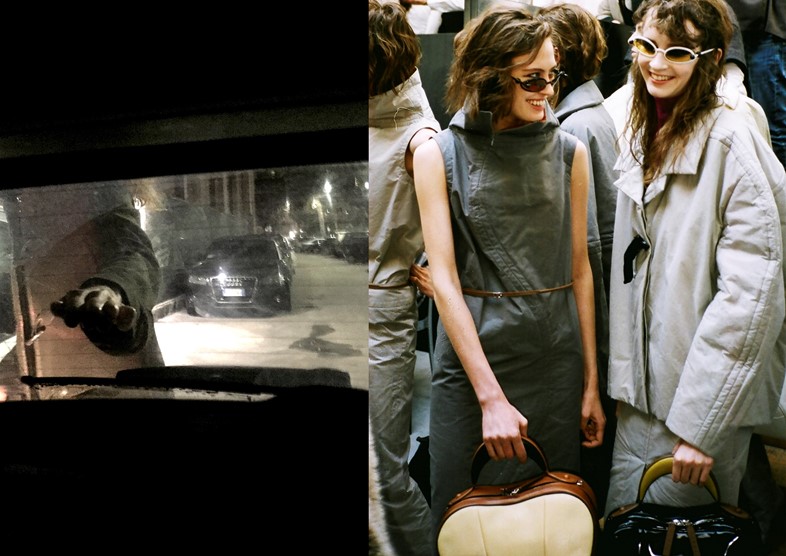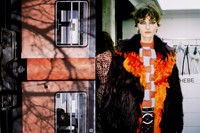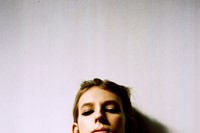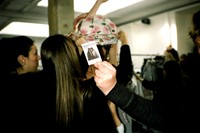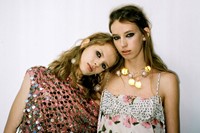Francesco Risso's first womenswear collection for the brand explored weirdness and femininity with appealing self-assurance
In an industry that can often feel a little like a game of musical chairs, Francesco Risso’s appointment as Marni’s creative director was one of a number of 2016’s power moves. He had spent the former seven years working behind-the-scenes at Prada, and while his new role might not have the same headline impact of Raf Simons moving to Calvin Klein, or Anthony Vaccarello to Saint Laurent, his first womenswear outing was hotly anticipated by a sphere which reveres that brand’s forward-looking creativity above all others. His debut collection proved Mrs Prada’s trust in his aesthetic to be well-placed: it had all of the irreverent eclecticism that Marni is famed for, alongside the considered intellectualism of Prada, and plenty of Risso’s own colour besides.
“A be1ng caught exploring multiplicity,” declared the shownotes which, written in a sort of oblique free verse, showed that Risso was intent on doing more than just making clothes for clothes’ sake, but was certainly inclined towards the high-concept realm of fashion. In a more literal sense, “It’s about femininity and the women around me,” he said backstage but, rather than embracing the traditional connotations of that word – say, pink tulle or floating lace – he proclaimed “an obsession with waxed cotton” which, paper-light yet slightly bulging, formed the first five looks he sent onto the runway. A high-concept approach to femininity, then – and one that was executed with a particularly weird appeal.
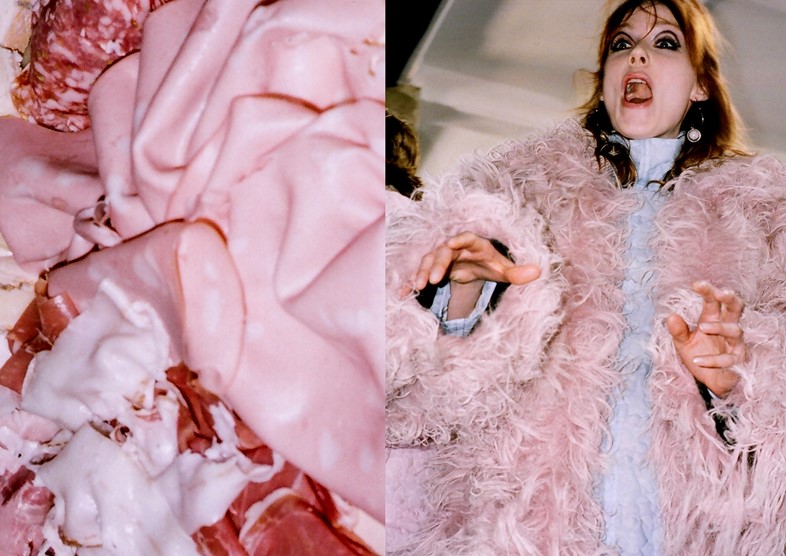
Because the clothes themselves were weird, in that perversely interesting way that comes from good design: funny fuzzy suits and boots sprouting fur; shiny nylon sou’westers and plasticky silks; op-art fabrics piled upon florals and finished with sculptural jewellery and bug-eyed sunglasses. “Out of scale, soft to the touch. Furry. Shaggy. Papery,” said those notes. The heels on the shoes appeared to be the ends of bent nails; open-toe kitten heels were attached to feet by lengths of bungee cord which almost deformed toes. Embroidery made from crushed CDs was interwoven through pressed Japanese nylon designed to resemble bubble wrap; super-thin belts strung through belt-loops in a strange play on proportion; ties gathered dresses and hemlines, disrupting any sense of regiment: “Drawstrings allow me reconfiguration” he wrote.
Marni has long been a house with a proclivity towards the bizarre – after all, Consuelo Castiglioni “was always about freeing men and women from stereotypes,” said Risso – and here such a sentiment was amplified. “I am exalted by diversities, and strive to take things to extremes,” he said. “Randomness is my idea of bliss.”
